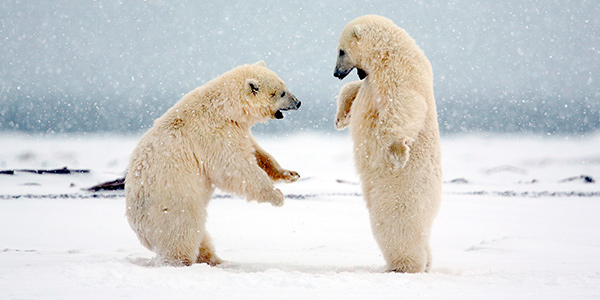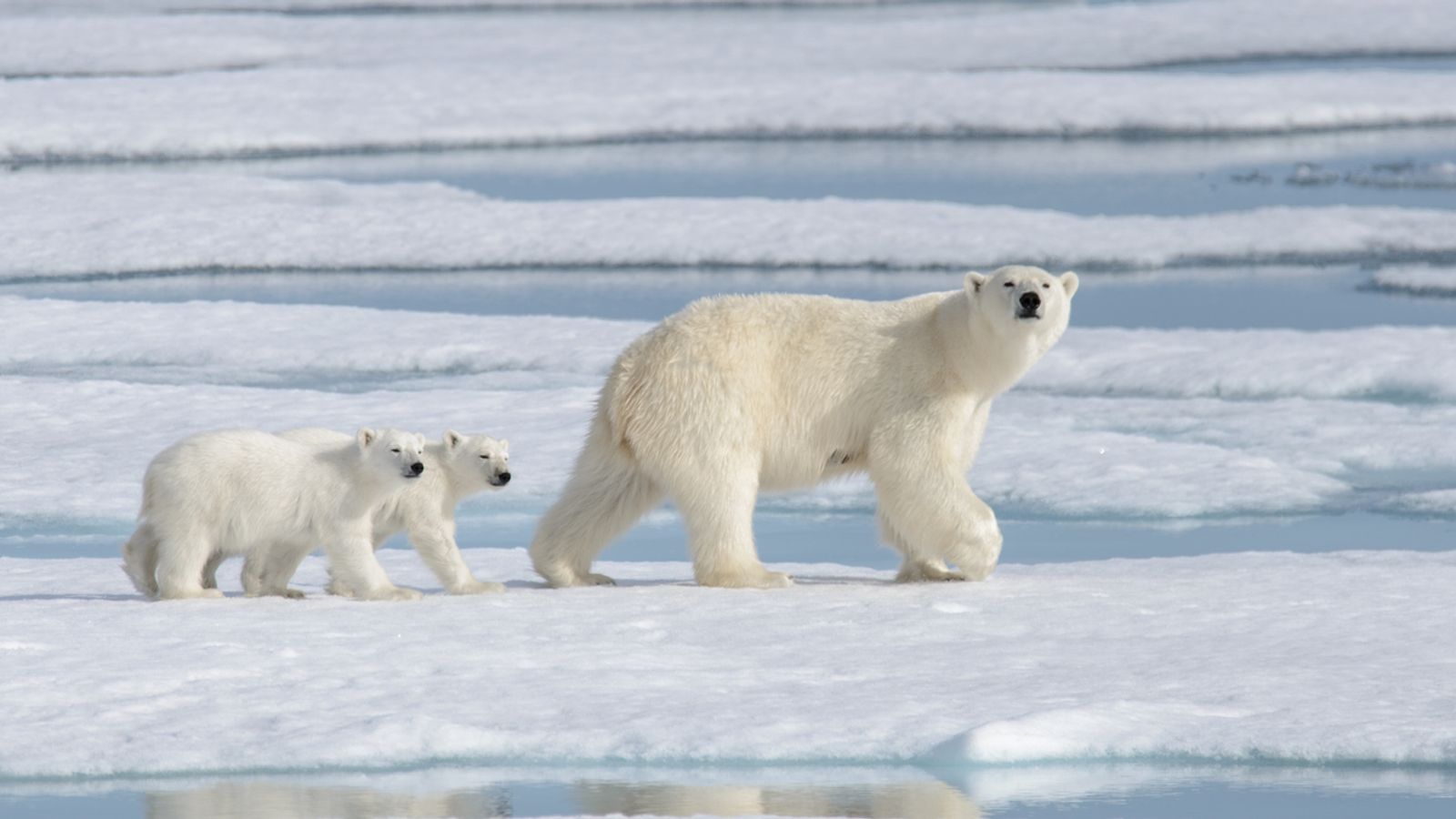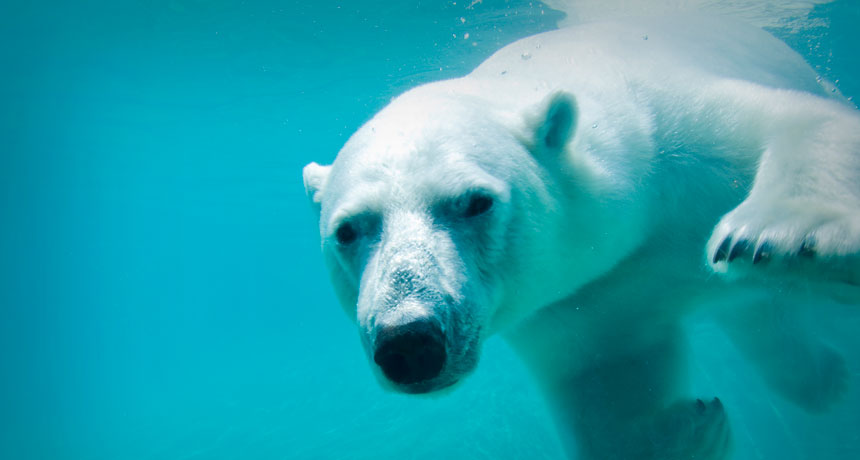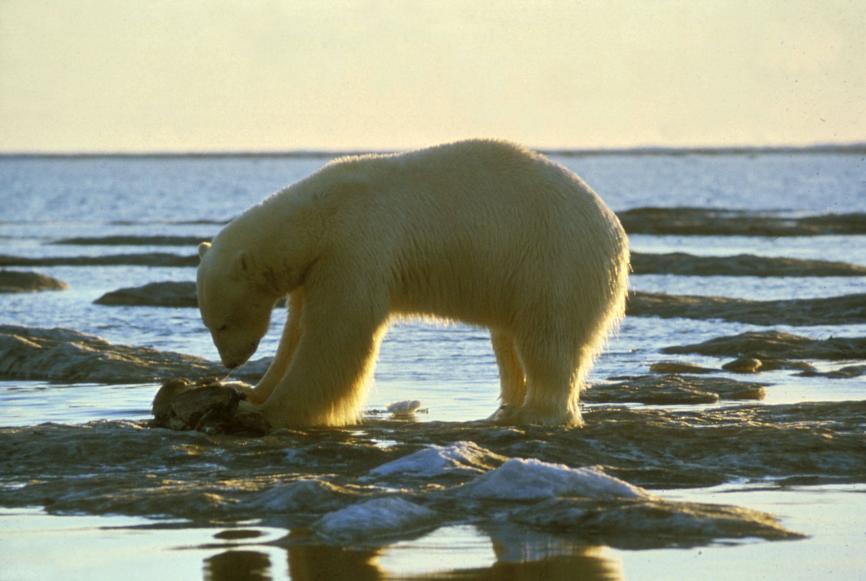

Polar bears are stocky, with a long neck, relatively small head, short, rounded ears, and a short tail.The male, which is much larger than the female, weighs 900 to 1,600 pounds. It grows to about 5.3 feet tall at the shoulder and 2.2–2.5 metres in length. The tail is 7–12 cm (3–5 inches) long. Sunlight can pass through the thick fur, its heat being absorbed by the bear’s black skin.

Polar bear fur is translucent, but it appears white because it reflects light. Their skin is actually jet black. They have broad feet with hairy soles to protect and insulate and to help movement across ice, as does the uneven skin on the soles of the feet, which helps to prevent slipping. Sharp claws are also important for gaining traction, for digging through ice, and for killing prey.

As well as reaching speeds of up to 6mph in the water, polar bears can swim for long distances and steadily for many hours to get from one piece of ice to another. Their large paws are specially adapted for swimming, which they’ll use to paddle through the water while holding their hind legs flat like a rudder. They've been tracked swimming continuously for 62 miles. Their front paws propel them through the water dog-paddle style.

Polar bears depend on the high-fat content in seal fat. The bears prey on both ringed and bearded seals across their range, but will take other prey when available. They use their very strong sense of smell to find seal breathing holes in the ice. Because they spend most of their lives on the sea ice of the Arctic Ocean depending on the ocean for their food and habitat, polar bears are the only bear species to be considered marine mammals.